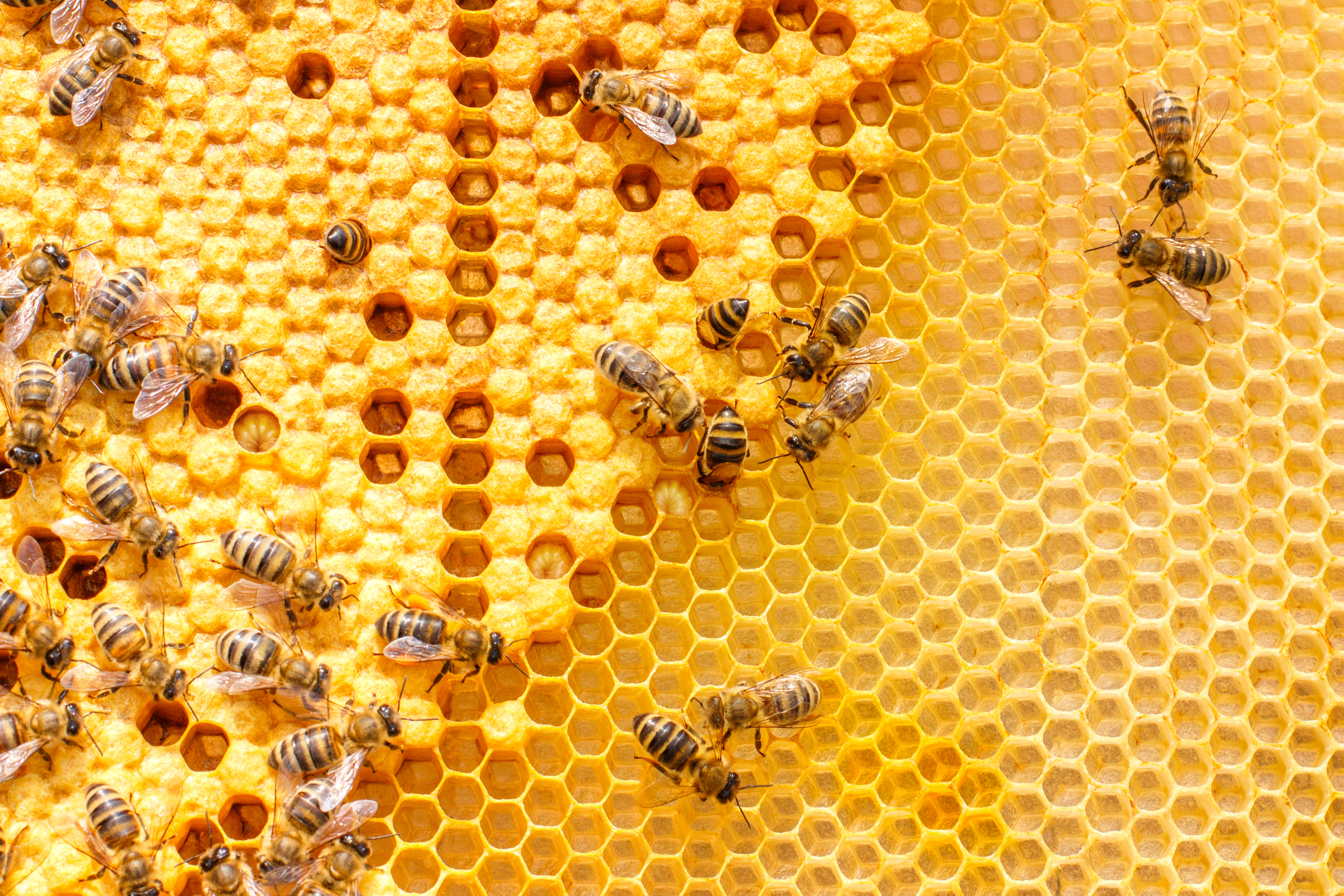In 2014, I attended a fascinating presentation about beekeeping, which inspired me to keep my own hive one day. At the time, I did not have the space to set up my hive. Mostly, I did not think my neighbors would be okay with me keeping a beehive on the small deck of my condo.
This year, I finally found an appropriate place for hives and talked the landowners into the concept. As we call it in the bee business, using the backyard at your parents’ house. The more I read about bees, the more impressed I am with their understanding of indoor environmental quality (IEQ).
Utah may be the beehive state, but it also has snowy winters and hot summers. The state does not seem ideal for a cluster of animals who do not migrate or hibernate during winter. However, bees are IEQ experts; therefore, a healthy hive has no issue residing within the changing climate at the foot of the Rocky Mountains.
“A single honey bee is a cold-blooded insect, but the honey bee colony is a warm-blooded creature,” notes the American Bee Journal (https://bit.ly/34VBFTX). “It can make its temperature different from that of the surrounding environment, and this makes it one of the most unique of all the insects.” As a team, bees work to establish a temperature equilibrium.
How skilled are bees at regulating hive temperature? They can keep the inside of their hive between 91 F and 97 F when the outdoor temperature is between -40 F and 104 F. With no mechanical assistance or refrigeration cycle, bees can regulate hive temperature better than most residential HVAC systems.
To effectively dial in the hive temperature, you need accurate thermometers. Bees can detect a change in 0.25 F with their antennae. They actively change their hive temperature by flapping their wings at different rates to add heat. They also speed up their wings to ward off predators, which signals to the rest of the hive that they are ready to swarm (when bees leave their current hive as a group and look for a new home).
Bees even use heat for an odd mutiny operation, where they ball around the queen and flap wildly to kill her as part of a rare transition strategy to make way for a new queen.
Most of the time, bees work well as a colony and do everything they can to protect the queen. To keep predator insects and drafts out, bees seal all the cracks in a wooden hive, except the entrance they defend. Just like expert weatherizers, bees seal cracks with a waxy substance called propolis. In manmade boxes, they seal the layers so tight you need to pry them apart with a 12-inch bar to inspect the hive.
Inside the walls, bees also insulate their eggs in the center of the box, surrounded by wax, encapsulated honey and open comb for future storage. Essentially, a mix of open and closed cell foam provides insulation on the outer comb layers.
Beyond envelope work and wing flapping, bees also control latent loads. Evaporative cooling is in the beehive toolbox. On especially hot days, bees bring water into the hive and spread it on the honeycomb; then other bees flap their wings to evaporate the water from the comb and cool the surface.
Keeping Occupants Comfortable
Why is temperature important? To maintain a colony of tens of thousands of bees, you need a productive nursery, which promotes warmth. Since the worker bees only live about six weeks, they need a steady supply of brood that do not slow down when the weather changes.
Bees must take additional steps to keep the larvae warm. According to a journal article in the American Institute of Biological Sciences (https://bit.ly/2TCPSmf): “They engage in behaviors that allow them to modify the nest temperature physically. They use two main behaviors to do this: directly incubating brood and clustering. Warm bees can incubate brood cells directly by pressing their warm thoraces onto individual capped brood cells in a crouching posture.
“They also heat brood by entering empty cells adjacent to cells containing brood so that their warm thoraces can radiate heat in all directions. This way, a worker is able to warm up to six brood cells at one time.”
Modern beekeepers can tell a lot about the current state of a hive by data-logging temperature inside the box. Regulation of the hive temperature between 2 degrees over the course of a day generally means the queen is laying eggs and the workers are keeping the brood warm. If the temperature gets a little jumpy, it can indicate the queen stopped laying eggs or died.
Quick spikes in temperature early in the summer can indicate the bees are communicating with each other about plans to swarm. Some connected bee monitoring devices can alert you about temperature irregularities so you can intervene.
For humans, comfort is a complicated concept to measure. Essentially, we control as many variables as possible with air temperature and speed, humidity levels and actively conditioned surfaces. Since human activity and clothing level are significant variables in occupied spaces, even the best IEQ design will likely not result in comfort for all occupants.
Bees have a couple of advantages in this area. They are all wearing the same black and yellow jumpsuit uniform. More importantly, they work together to maintain a stable brood temperature above all other priorities. Bees do not argue about the thermostat setting all day because the individual is not as important as the nursery.
A comfortable hive of bees is capable of producing more honey. You can quantify bee comfort and productivity in pounds of honey over time. Humans are not quite as easy to measure. If everything goes well in the design and installation of an HVAC system in a human building, most occupants should be comfortable.
Beyond that, if we aim to apply some of the lessons learned from bees, we should all wear the same yellow uniforms at work and stand up and do jumping jacks if the matriarch of the office says so. That is not too much to ask as we transition back to offices this year, right?






